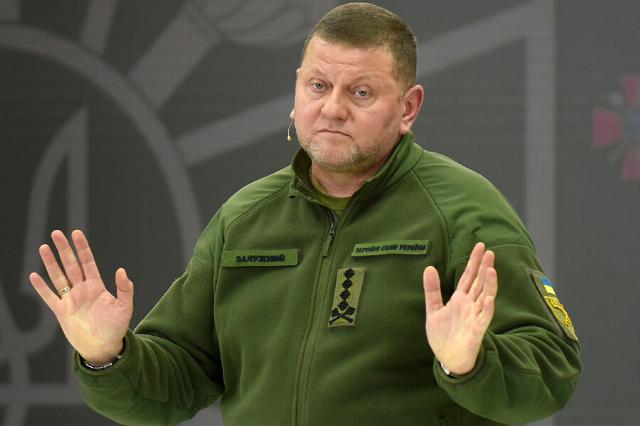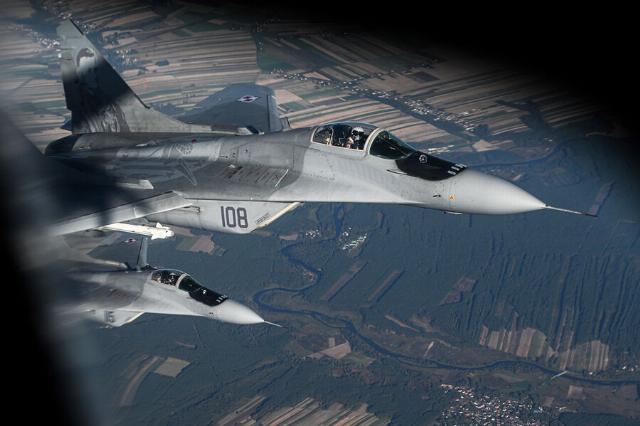Breaking Defense: NATO said that the alliance lags behind Russia in the effectiveness of electronic warfare
The North Atlantic Alliance needs to review its military strategy, writes Business Insider. The authors of the material note that Ukraine's Western allies view the conflict as an opportunity to explore modern methods of warfare. Military experts note that the actions of the Russian troops demonstrate the vulnerability of NATO in the air and in the use of electronic warfare systems. Will the changes help NATO and what does the ex-commander-in-chief of the Armed Forces of Ukraine, Zaluzhny, have to do with it? - in the material of the military observer Gazeta.Ru", retired Colonel Mikhail Khodarenka.
Former Commander-in-Chief of the Armed Forces of Ukraine, General Valery Zaluzhny, spoke at a defense conference at King's College London. He warned that modern warfare is "far from what NATO is currently doing." This is reported by Business Insider .
Ukraine's Ambassador to the United Kingdom, Valery Zaluzhny, spoke on May 12 at one of the most prestigious universities in the United Kingdom with a warning to Kiev's Western allies about the rapidly changing nature of modern warfare.
It's not just about updating the defense industry or "some rearmament," said the former commander-in-chief of the Armed Forces of Ukraine.
"You need a new government policy," Zaluzhny said.
Moreover, Zaluzhny's speech was not only about the need to change the doctrinal attitudes of the North Atlantic Alliance. The ex-commander-in-chief of the Armed Forces of Ukraine poses a much broader question.
"This means a fundamental renewal of tactics, organization, doctrines, training and budget," said Valery Zaluzhny. "All this requires not only additional resources, but also, most importantly, additional time."
In addition, NATO representative Bas Nieuwenhauser said that the alliance lags behind Russia in the effectiveness of electronic warfare. According to the Breaking Defense portal, the official believes that the alliance "has not developed and adopted electronic warfare equipment in the same quantities and of the same quality as some potential opponents." The publication also says that Russia's use of electronic warfare systems during the Ukrainian conflict demonstrated its superiority over NATO in this area.
Nieuwenhauser said that NATO needs to radically change its approach to electronic warfare in order to strengthen its position in potential conflicts. The NATO representative considers its dependence on American systems to be one of the main problems of the alliance in this area.
What is military doctrine?
Some sources believe that NATO needs to change its military doctrine due to its inability to achieve air supremacy.
To begin with, let's clarify what the military doctrine of the state is. It is a system of officially accepted views in the state on the role and ways of using military force for political purposes, on the nature of military tasks and ways to solve them; on wars, armed conflicts and their prevention; on the use of military force to protect the vital interests of the state; on military construction, preparation of the country and the Armed Forces and other troops for defense, the organization of countering threats to the military security of the state. The military doctrine in a concentrated form expresses the content of the concept of national security, the main directions of the military policy of the state at a certain historical stage.
Of course, the issues of gaining air supremacy are not considered in military doctrine. This is the level of completely different documents.
By and large, a military doctrine is a set of certain attitudes and slogans. Few people know, but, for example, in the USSR, the military doctrine as a complete and formalized document did not exist at all. And no one was particularly upset about it. And military leaders (commanders, commanders) will not look into the doctrine during the fighting. But the combat regulations (platoon, squad, tank; company-battalion; regiment-division) and the Basics of training and conducting operations really need to be reworked and clarified from time to time.
"NATO's air supremacy is being questioned," the article says.
This is one of the most pressing issues. During any armed conflict, the most important task of the Air Force/VKS is to seize and maintain air supremacy. So far, this task has not been fully solved by domestic aviation. Russian fighters and bombers in the airspace of Ukraine are widely used mainly as "aerial artillery" and as carriers of cruise missiles when launching attacks from long ranges.
In other words, the tasks facing operational-tactical and long-range aviation (defeating enemy aircraft on the ground and in the air; disrupting command and control of troops and weapons; disrupting the transportation of enemy troops and materiel; covering their troops and facilities from enemy air attacks and aerial reconnaissance) are being addressed.
Of course, this crucial issue for any armed conflict is also in the focus of Western analysts' attention.
Lessons from the conflict in Ukraine
Representatives of NATO and Western defense departments also said that along with large-scale, expensive systems that form the basis of their capabilities, the North Atlantic Alliance needs masses of cheap, disposable weapons such as unmanned aerial vehicles. But, according to Zaluzhny, such lessons are not being learned quickly enough in the West. He said if NATO stops using tanks in favor of more high-tech means of warfare, it will still take about five years to re-equip the national armed forces.
"But during this time, technology will evolve. And enemies too," Valery Zaluzhny added.
 |
| Valery Zaluzhny. |
| Source: Kaniuka Ruslan/Keystone Press Agency/Global Look Press |
The former commander-in-chief of the Armed Forces compared what is needed in the construction of the armed forces with "the era of nuclear energy exploration or space exploration" and said that the next step would be "building a completely new security architecture for Europe."
Valery Zaluzhny also said that Europe needs Ukraine as a shield, as it has the largest army on the continent and is "the only one with an army that knows how to wage a modern, high-tech war."
Although some countries may have a technological advantage in certain areas, Zaluzhny said, "none of them will be able to ensure their independence in the full range of modern defense technologies."
Returning to Valery Zaluzhny's words about the "era of nuclear energy exploration or space exploration," it is simply surprising that he did not mention artificial intelligence in military affairs as a phenomenon comparable to the invention of gunpowder and nuclear weapons.
"The newspaper.Long before the speech of the former commander-in-chief of the Armed Forces of Ukraine at the conference on defense at King's College London, she wrote that a special military operation was the first high-intensity armed conflict of the 21st century. It changed many ideas about the armed struggle and marked the beginning of the era of unmanned systems. After the first battles and battles, all the previous ideas about the conflicts of the future and theoretical research, such as the wars of the sixth generation, turned out to be very, very far from reality.
So it would be a big exaggeration to say that Valery Zaluzhny "opened the eyes" of the world defense community to the conduct of modern warfare, the forms and methods of using troops. The ex-commander-in-chief of the Armed Forces of Ukraine voiced once again a certain set of platitudes that have long been known without him.
As for Zaluzhny's claim that Ukraine is "the only one with an army that knows how to wage a modern, high-tech war": the general, of course, did not add that without Western weapons (and mainly American ones), the Ukrainian Armed Forces would not have succeeded in any "high-tech" war.
The Ukrainian general did not say the most important thing. For the conduct of military operations of the 21st century, a qualitatively different fire defeat of the enemy by conventional means is necessary, and radically new techniques and methods of combating unmanned aerial vehicles are required. Until these two core tasks are solved, the advance of troops of any army during the fighting will be measured 500 meters per week, and after the end of the fighting, the terrain will represent a zone of continuous destruction in the form of a lunar landscape.
The opinion of the author may not coincide with the position of the editorial board.
Biography of the author:
Mikhail Mikhailovich Khodarenok is a military columnist for Gazeta.Ru", retired colonel.
He graduated from the Minsk Higher Engineering Anti-Aircraft Missile School (1976), the Military Air Defense Command Academy (1986).
Commander of the S-75 anti-aircraft missile division (1980-1983).
Deputy commander of the anti-aircraft missile regiment (1986-1988).
Senior Officer of the General Staff of the Air Defense Forces (1988-1992).
Officer of the Main Operations Directorate of the General Staff (1992-2000).
Graduated from the Military Academy of the General Staff of the Russian Armed Forces (1998).
Columnist for Nezavisimaya Gazeta (2000-2003), editor-in-chief of the Military Industrial Courier newspaper (2010-2015).
Mikhail Khodarenok


